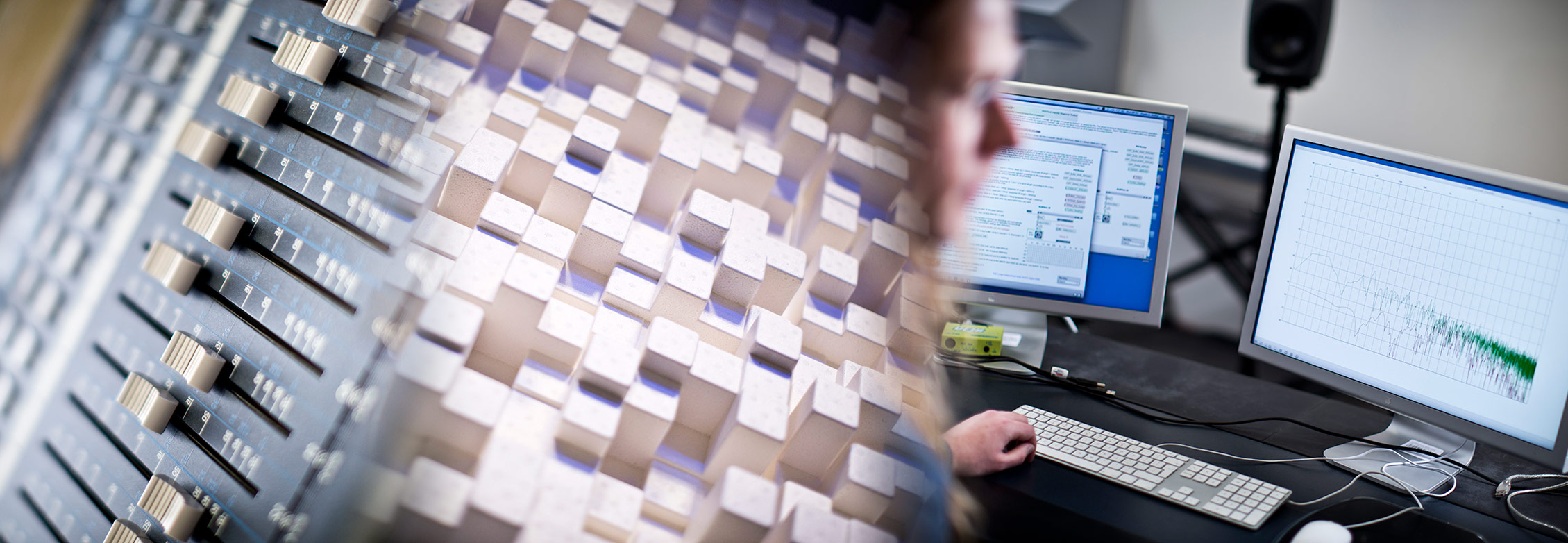
Convolution software makes way for new directions in digital music-making
Researchers based in the Centre for Research in New Music (CeReNeM) have been developing state-of-the-art open-source software, which can be used to create and enhance electronic music.
What was the problem?
Convolution has become a key element of digital music-making. This technology allows the reverberant behaviour unique to a certain space – for example, a room, a recording booth or a concert hall – to be captured and recreated. It can also be used to apply filters and in other more creative applications for sound design. However, the original convolution reverbs were hardware boxes that, because of their expense, were confined almost exclusively to studios. Although the technology is now commonly available as affordable computer software, technical limitations have restricted its use.
Benefits of this research
The HISSTools (Huddersfield Immersive Sound System) Impulse Response Toolbox allows users to custom-build solutions that meet their needs using modules, rather than having to rely on fixed and limited options. Its deliberately musician-centric approach has been adopted internationally, including integration into a world-leading product with 1.7 million users and a crucial role in the design of concert halls by a global firm of engineering consultants.
What did we do?
In 2011, as part of the HISSTools project, Dr Alex Harker released a package of 17 externals for the creative coding environment Max. These addressed a range of creative and technical problems and some were based on innovative spectral processing techniques, including convolution. Each module dealt with a specific impulse-response manipulation task. This ‘toolbox’ approach allowed users to apply the technology in a more adaptive manner, for instance, using impulse responses in a variety of ways, rather than just to emulate natural reverberant spaces, or correct loudspeakers.
In 2012 Berlin-based software company Ableton, a world leader in its field, formed a partnership with the HISSTools project to develop a new convolution reverb device to run within the firm’s flagship Live 9 software, which has 1.7 million users. Two reverb devices and an impulse measurement device were developed and can now be used by any owner of Max for Live, part of the Suite version of Live 9. As open-source and fully customisable devices, they offer an unprecedented level of accessibility for the user. They have the ability to use different sampled spaces for the early and late parts of the reverb, offering enhanced flexibility and real-time control. Two of the University’s concert halls are included in the sample spaces for artists to use in their musical explorations. Ableton has released a video demonstrating the wide range of spaces the project focused on.
What happened next?
The HISSTools Impulse Response Toolbox has helped make high-level technology available to practitioners and has been adopted by major international companies, organisations and independent research centres involved in the creation and reproduction of state-of-the-art sound.
The Norwegian Centre for Technology in Music and the Arts (NoTAM) chose the HISSTools Impulse Response Toolbox for a major project to capture the impulse responses of 60 venues in Oslo to create a sonic map of the city.
‘Not only does the tool kit offer the possibility of capturing a large amount of channels; it can be done quickly and the results can be checked while in the venue. This is extremely important in order to attain an efficient workflow when embarking on capturing lRs from the large amount of spaces we are planning to.’
Notto Thelle - Artistic director of NoTAM